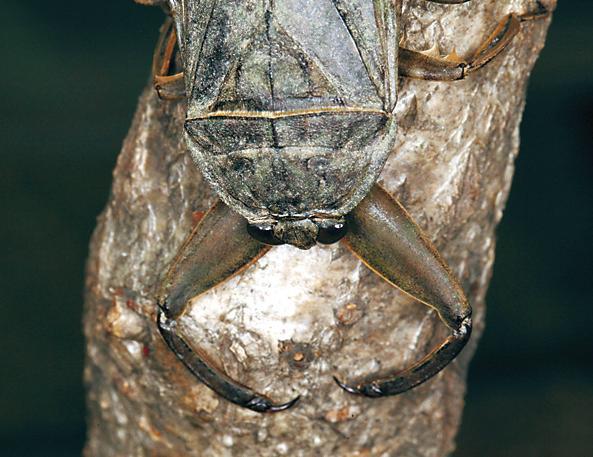Giant water bugs, once commonly found in rice fields and ponds throughout the country, are now rated as a second-class endangered species.
Efforts to restore their population have been under way for years, led by private biodiversity research centers.
In the latest of the efforts, Holoce Ecosystem Conservation Research Institution in Hoengseong, Gangwon Province, reintroduced 40 pairs of the rare insects, to a nearby pond last week.
Efforts to restore their population have been under way for years, led by private biodiversity research centers.
In the latest of the efforts, Holoce Ecosystem Conservation Research Institution in Hoengseong, Gangwon Province, reintroduced 40 pairs of the rare insects, to a nearby pond last week.

They were among about 400 entomologist Lee Gang-won bred in captivity at the remote mountainside research center, starting with six bugs he captured back in 2007.
“Giant water bugs, or lethocerus deyrollei, were once very common, so much so that they earned the moniker ‘toe-biter,’” he said.
Notorious for inflicting painful bites on humans, these large tan or brown insects are now found only in small populations on the islands of Jeju and Gangwha. It is suspected that a loss of habitat and pesticides decimated their numbers, Lee explained.
“They are the supreme predators in ponds. Their extinction must be prevented, as it could seriously affect ecosystems,” he added.
An adult water bug grows 5 to 7 centimeters long and eats small fish, tadpoles, frogs and snails.
They usually grab hold of a plant near the surface, and stick their short breathing tube out of the water to allow them to breath while waiting for prey.
They leave their habitats at night in search of mates or another pond. They are attracted to bright lights. But it is thought that for a creature that evolved using celestial navigation, electric lights of urban environments are too much, resulting in disorientation, spiral flight paths, and eventual death from exhaustion. This would account for the occasional find of several dead bugs underneath street lamps.
By Lee Sun-young (milaya@heraldcorp.com)
-
Articles by Korea Herald







![[Graphic News] More Koreans say they plan long-distance trips this year](http://res.heraldm.com/phpwas/restmb_idxmake.php?idx=644&simg=/content/image/2024/04/17/20240417050828_0.gif&u=)
![[KH Explains] Hyundai's full hybrid edge to pay off amid slow transition to pure EVs](http://res.heraldm.com/phpwas/restmb_idxmake.php?idx=644&simg=/content/image/2024/04/18/20240418050645_0.jpg&u=20240419100350)






![[From the Scene] Monks, Buddhists hail return of remains of Buddhas](http://res.heraldm.com/phpwas/restmb_idxmake.php?idx=652&simg=/content/image/2024/04/19/20240419050617_0.jpg&u=20240419175937)

![[KH Explains] Hyundai's full hybrid edge to pay off amid slow transition to pure EVs](http://res.heraldm.com/phpwas/restmb_idxmake.php?idx=652&simg=/content/image/2024/04/18/20240418050645_0.jpg&u=20240419100350)

![[Today’s K-pop] Illit drops debut single remix](http://res.heraldm.com/phpwas/restmb_idxmake.php?idx=642&simg=/content/image/2024/04/19/20240419050612_0.jpg&u=)